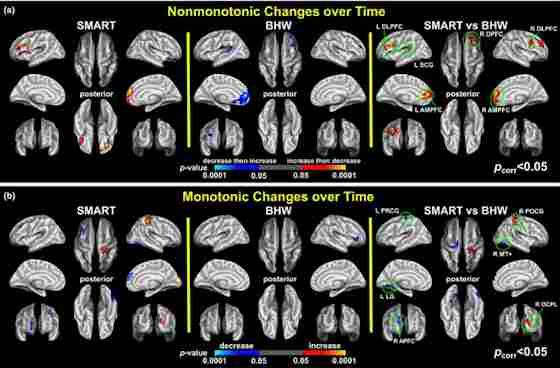Overview
With increased awareness of the long-term effects of traumatic brain injury on cognition, many researchers are curious as to what can be done to enhance recovery. In this study, researchers used Strategic Memory Advanced Reasoning Tactics, or SMART™ Brain Training, and measured the cortical thickness in 60 individuals with chronic TBI pre- training, immediately post-training, and 3 months post-training. Findings suggest that brain connectivity and cortical thickness may serve as markers of plasticity, and that brain plasticity induced through cognitive training can continue throughout the chronic phases of TBI.
Colormaps for nonmonotonic (a) and monotonic (b) within‐ and between‐group contrasts for changes in cortical thickness over time (p vertex < .05, p cluster < .05). SMART™, Strategic Memory Advanced Reasoning Tactics; BHW, brain health workshop; L, left; R, right; DLPFC, dorsolateral prefrontal cortex; SCG, subcentral gyrus; DPFC, dorsal prefrontal cortex; AMPFC, anterior medial prefrontal cortex; PRCG, precentral gyrus; PCG, postcentral gyrus; MT+, middle temporal complex; LG, lingual gyrus; APFC, anterior prefrontal cortex; OCPL, occipito‐parietal lobe





